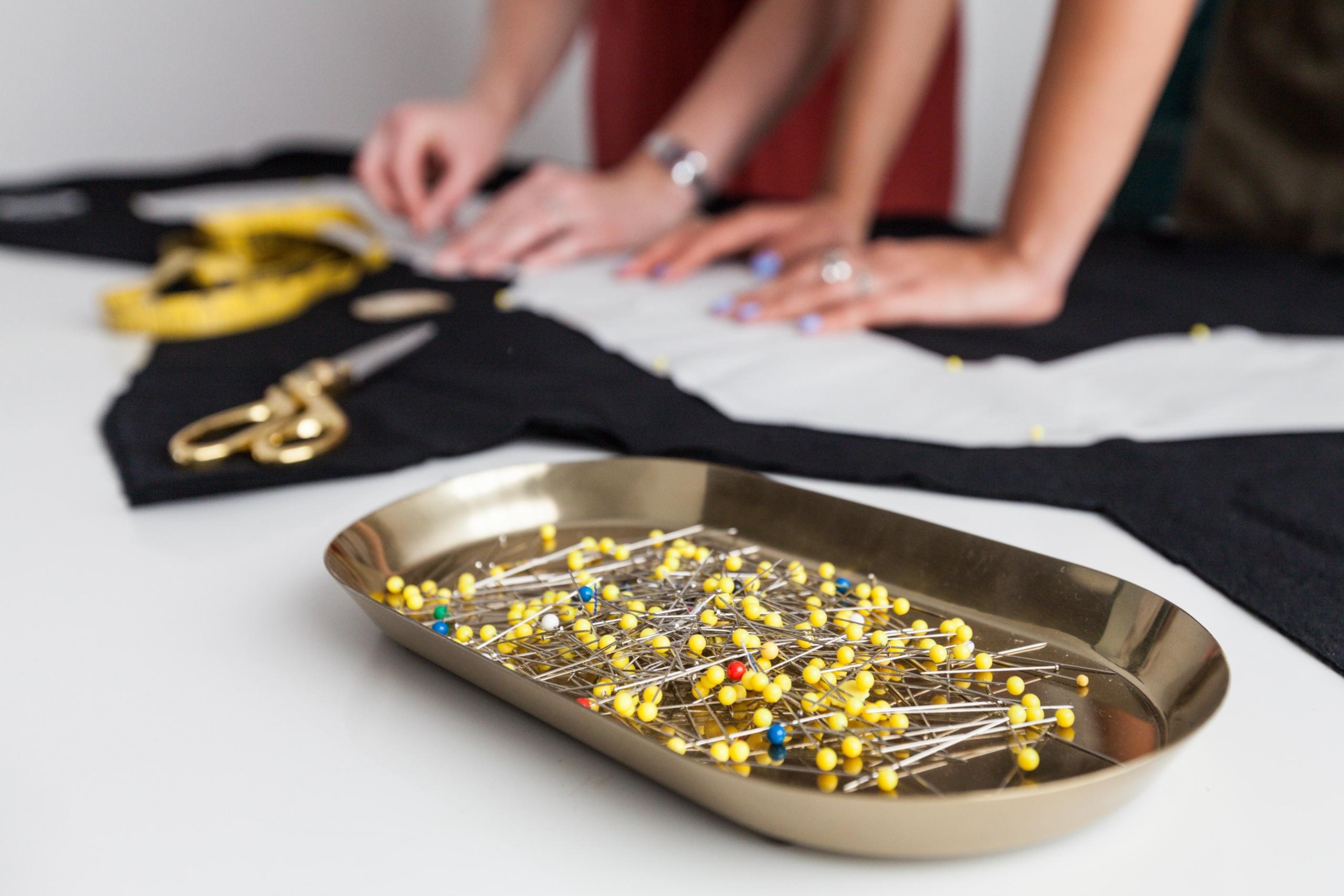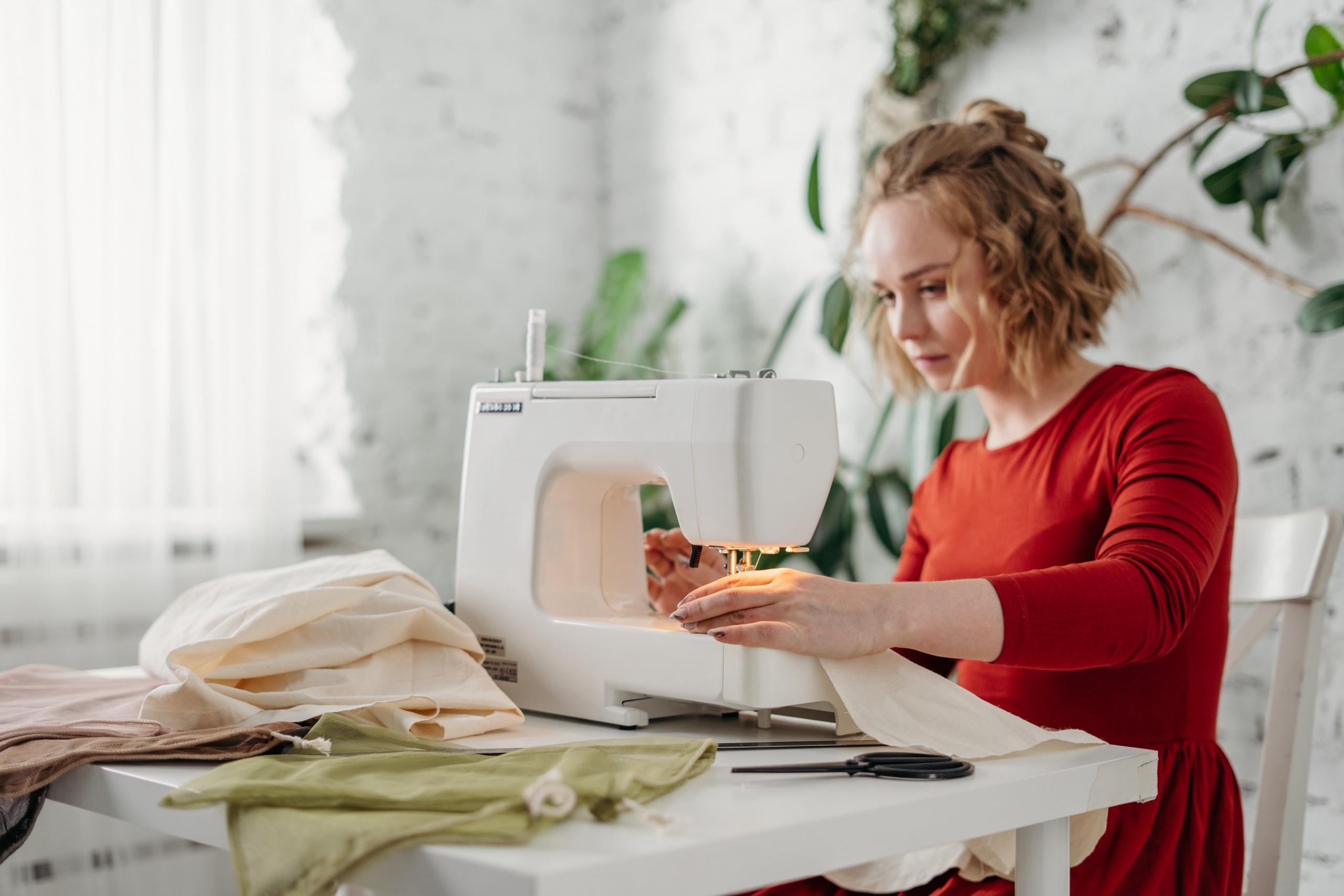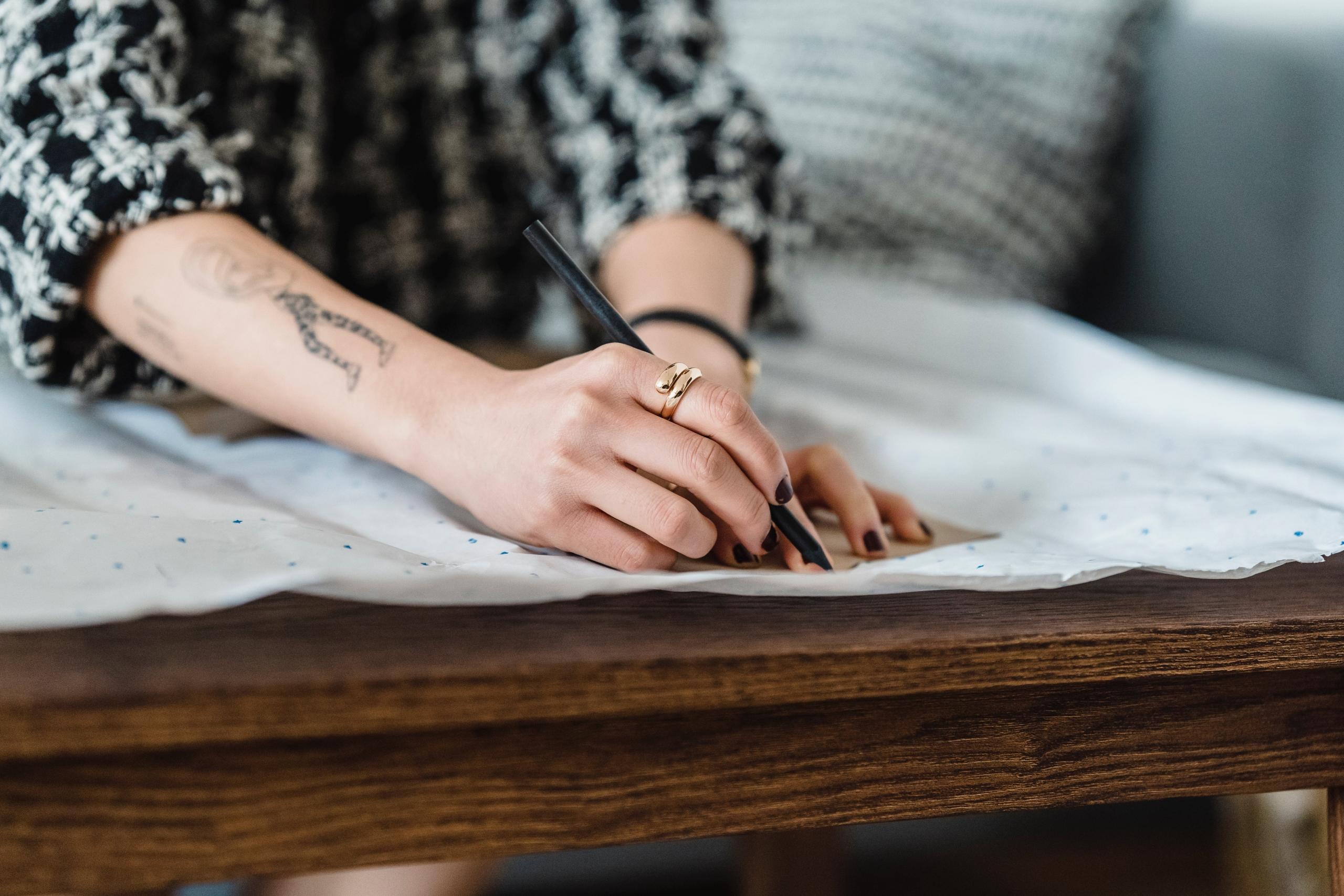Dressmaking is an expression of individuality and a celebration of personal style. Unknown
Today, sewing your own clothes is more of a novelty than a necessity.
However, if you know how to sew, you have an advantage over those who don't and who are limited to buying clothing in shops: you can make any piece of clothing you desire, in any type of fabric and any colour you want.
Whatever your reasons for wanting to make your own clothes, you'll be in good company, because sewing seems to be enjoying a resurgence.
Perhaps you too have decided to dust off your sewing machine and put it to good use.
Maybe you feel inspired by the gorgeous fabric you found that would look stunning as a summer dress or a wrap skirt.
But, how do you actually make that article of clothing, once you've settle on the type of garment you want to make?
The answer is: use a sewing pattern.
In this article, we'll share some recommendations of online and brick-and-mortar stores to help you find the best places to buy dressmaking patterns and patterns for other articles you might consider sewing, such as doll 's clothes and purses.
Yes, purse patterns are a thing!

Find Sewing Patterns Online
If you don’t want to spend hours in a brightly-lit shop, thumbing through sewing books, or you don't have a sewing shop nearby, your best bet for finding a wide selection of patterns is to look online.
Here is a list of local and international sites where you can source sewing patterns online:
- Gypsy Girl (gypsygirl.co.za). Great for second-hand sewing patterns.
- Etsy (etsy.com)
- Simplicity (simplicity.com). You can find Disney patterns on this site.
- Burda Style (burdastyle.com). Burda is part of Simplicity Pattern company, but they also make patterns available on their own site.
- Sewaholic Patterns (sewaholicpatterns.com)
- Victory Patterns (victorypatterns.com). This site offers patterns for stylish garments that are easy to sew.
- Vogue Patterns (voguepatterns.us). Many of the patterns have been created by major designers.
- By Hand London (byhandlondon.com)
- Tilly and the Buttons (tillyandthebuttons.com)
- Thread Theory (thethreadtheory.com)
- Swim Style (swimstyle.com.au)
- Edgewater Ave (edgewaterave.com). Great for swimwear patterns.
- Peppermint Magazine (peppermintmag.com). You can find free sewing patterns here.
The only way that process could be made more effortless is if you learned how to make your own patterns!
It is worth mentioning the revolution in clothing patterns: digitising them.
Many designers are now scanning their patterns in or drawing them outright using computer drawing software, and then making their patterns available, either as PDF downloads or paper patterns.
The advantage of the PDF pattern files is that they are a bit less expensive than the paper patterns.
Behind every beautiful dress is a dressmaker who poured their heart and soul into its creation. Unknown

Finding Patterns in Your Local Sewing Shop
Right after shopping online for everything from groceries to digital goods like music and films, chain stores are the go-to for most shoppers.
And why not? They are convenient, competitively priced and they always seem to have what you want when you want it.
However, despite the convenience they offer to consumers, large chain stores usually make things more difficult for independent retailers who often struggle with the same business issues, but without the benefit of a large corporation's treasury to back them.
Add to that taxation and regulation making it ever harder for independent shops to keep their doors open, let alone to make a profit, supporting local businesses becomes a more important consideration.
Besides, your local sewing supply store clerks most likely have a wealth of experience and advice you could benefit from, such as which fabrics would flow best for that A-line dress you want to make or any hacks for sewing a knit dress.
In fact, there is a good chance that you will be offered sewing tutorials; you may even get some instruction on pattern making!
All across South Africa, there are delightful shops, often tucked away from the main roads, that are just brilliant in their resources and knowledge about sewing. Here, we’ve compiled a list of some of the best.
Sewing Shops and Haberdasheries Across South Africa
| City | Shop Name | Phone |
|---|---|---|
| Johannesburg | Johannesburg Sewing Centre | 011 333 3060 |
| Cape Town | Cape Town Sewing Centre | 021 465 2111 |
| Pretoria | Mezomode Quilting and Sewing | 081 267 7267 |
| Durban | Habitex | 031 579 5730 |
| Vereeniging | Habby And Lace | 016 422 5400 |
| Krugersdorp | Die Krapwinkel | 011 953 4805 |
| Pietermaritzburg | Ragland Fabric Group | 033 342 1051 |
| East London | K&H Fabrics | 043 748 2783 |
You're likely to find that the shop owners are passionate about the needle arts and more than willing to share with you their knowledge of the pattern-making basics of fashion design.
After you've built up some skill using sewing patterns, why not try to make your own dress pattern?

How Do I Choose a Sewing Pattern?
So, now that you have some idea of where to find sewing patterns, you will need to figure out how to choose the right pattern.
As a beginner buying your first pattern, a skirt is probably the best piece to start with, as skirts are relatively easy to get to fit well.
You'll learn all about hems and seams, and depending on the style of skirt you choose to make, you'll possibly learn to put in a zip.
We'd recommend that you choose a patterns described as easy or very easy, and avoid curved seams and pleats.
These are some of the important points to consider when choosing a sewing pattern, whether you are skilled or a novice with the sewing machine:
- Pattern sizes can differ between brands, so always check size charts before you buy.
- Check what type of fabric is recommended for a sewing project, because the fabric will influence the results.
- Search for reviews of different patterns online, as many keen sewers will leave reviews to help others make an informed choice.
How Do I Know Which Pattern Size to Buy?

It may seem bizarre, but you should not buy the dress size you would normally choose when buying ready-made clothes!
Instead, you should take your height and measure your chest, bust, waist and hips and use these measurements to match up with the size chart on the pattern.
Select the size on the size chart which is the closest match to your own measurements, and if you are between sizes on the chart, choose the bigger size. You can always adjust the garment when you put it together.
TIP:
Your top and bottom sizes may differ, so let yourself be guided as follows:
- For trousers, shorts and skirts choose the size that matches your hip measurement.
- For tops, jackets and dresses choose the size that matches your bust measurement.
Understanding Sewing Patterns
It can be daunting to get to grips with all the terms you'll see on the pattern you select. We've put together this list to help you understand what you're dealing with, so you can start on your sewing project with confidence.
- Notions. Notions are a list of the items you’ll need to complete the garment, and will include accessories such as buttons and zips.
- Sewing Pattern Types.Patterns for women will usually be categorised as follows:
-
- Petite
This is a pattern designed for women with heights between 1.57m and 1,63m (without shoes), and a shorter back-waist length. - Misses
This means the pattern has been designed for women with average proportions with heights between 1.65m and 1.68m (without shoes) - Women
This means the pattern has been designed for women who are also between 1.65m and 1.68m tall (without shoes), but with larger hips and busts than Misses.
- Petite
- Fabric suggestions. The pattern will come with a list of fabrics that the sewing pattern has been designed to be used with. It is a good idea to use one of the materials suggested by the manufacturer-urer, because the pattern would have been tested with these fabrics, and using a fabric that is not recommended could have disastrous results!
- Finished Garment Measurements.Finished garment measurements allow for garment ease.Garment ease refers to how much room there is to move around in the made-up garment.You may also find a reference to wearing ease on the pattern envelope, and this is the minimum amount of ease needed for a garment to be comfortable. Wearing ease is usually 7.6cm at the hips, 6.4cm at the bust, and 2.5cm at the waistThen there's design ease, which is refers to how much the designer has added or subtracted to the design to create a certain silhouette.In order to determine ease, you need to measure the pattern from seam to seam, making sure to exclude seam allowances. You then need to compare your body measurements to the total circumference measurement of the pattern. The difference will be the amount of ease the pattern has.
Dressmaking is the art of turning fabric and thread into wearable works of art. Unknown
Remember that before making your first cut in that gorgeous material of yours, read our article which explains how to adjust your patterns for size, length and the type of material you’re working with.















